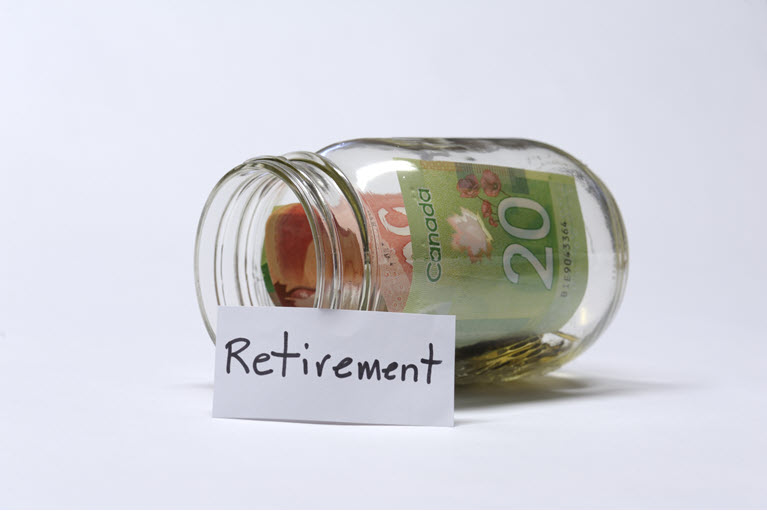To RRSP or not to RRSP, that is the Question
February 11, 2022 by David Christianson

February is the peak of what we used to call “RRSP season”. In years past, it was common for people to leave their decision about whether or not to contribute to an RRSP right up to the March 1 deadline.
But we don’t do that anymore, do we?
In order to deduct an RRSP contribution on your 2021 income tax return, you must have a contribution receipt dated within 60 days of year end.
Every dollar of contribution (within your limit) reduces your taxable income by a dollar. The amount of your tax reduction is based on your marginal tax rate (MTR), multiplied by the contribution amount.
If your MTR is 33.25%, for example, then every $1,000 contributed to your (or your spouse’s) RRSP will reduce your taxes by $332.
If you don’t pay taxes, either because your taxable income is below $13,000, or it is higher but offset by tax credits, then an RRSP contribution will not save you any money on your tax return.
The same is true if you do not have contribution room. Your 2021 limit is shown on your 2020 income tax Notice of Assessment. The amount will be 18% of your 2019 “earned income”, minus any Pension Adjustment (PA) plus any unused previous room.
The PA only applies if you are a member of a pension plan. It is a calculated amount that reduces your RRSP limit by the assumed value of last year’s membership in the pension.
As we said, reducing your taxable income will reduce your taxes by the contribution amount multiplied by your 2021 marginal tax rate. Note that the dollar amounts below increase each year by inflation.
If your taxable income in Manitoba was between $50,197 and $74,416 for example, your combined federal and provincial marginal tax rate is 33.25%. That is the rate you pay on your last dollar of income from employment, self-employment, net rental or interest income, and that is the rate at which you will save on taxes with an RRSP contribution.
The MTR between $34,4313 and $50,196 is 27.75%. It goes up to 37.9% at $74,417, 43.40% at $100,392, 46.78% at $155,625 and 50.40% at $221,708.
(So, that slays the argument that the rich don’t pay their fair share, but that’s a different discussion.)
Another way of looking at the RRSP advantage is that if your budget tells you that you can afford to contribute $1,000 to your RRSP and your marginal tax rate is 33.25%, then you can actually afford to contribute $1,497, as your tax saving on a $1497 contribution will be $497.
Borrowing the $497 might be necessary until your tax refund comes in, but if you make this work, you increase your saving capacity by almost 50%. That extra $497 per year for 30 years, invested at 6%, increases your future value from $80,000 to $120,000. If you can do $5,000 a year plus tax refund, it becomes some pretty serious money.
If you are an employee, you can request that your tax withholdings be decreased so that you can increase your savings right away. But if you like this idea, consider starting NOW.
Remember that all future withdrawals are taxable, and they also add to your Net Income. That’s ok if, like many people, you will be in a lower tax bracket after retirement. The deferral then results in a permanent tax saving.
If you are in the same tax bracket in retirement, then you still had the benefit of a tax deferral for 20, 30 or 40 years, which means a lot.
However, if you will be in a higher tax bracket at retirement, then TFSA contributions may be more valuable in the long run than RRSP, especially if over $81,000 per year of Net Income. That’s the level at which Old Age Security starts to become clawed back, another 15% hit on top of income taxes.
For low-income seniors, RRIF withdrawals can negatively affect Guaranteed Income Supplement payments, the Age (65) Credit and other income-tested benefits.
The magic of the Tax Free Savings Account is that the name is accurate – all withdrawals are tax free, and do not show on your tax return anywhere. Hence, they have no effect on either taxes or other government benefits.
This means that, come retirement, a dollar in a TFSA may be worth as much as $2 in an RRSP.
So, based on your current tax bracket and your estimated future bracket, which one is best for you?
* * *
Dollars and Sense is meant as an introduction to this topic and should not in any way be construed as a replacement for personalized professional advice.
Please consult legal, tax, insurance and investment experts for advice on your unique situation.
David Christianson, BA, CFP, R.F.P., TEP, CIM is a Senior Wealth Advisor and Portfolio Manager with Christianson Wealth Advisors at National Bank Financial Wealth Management, and author of the book Managing the Bull, A No-Nonsense Guide to Personal Finance.

